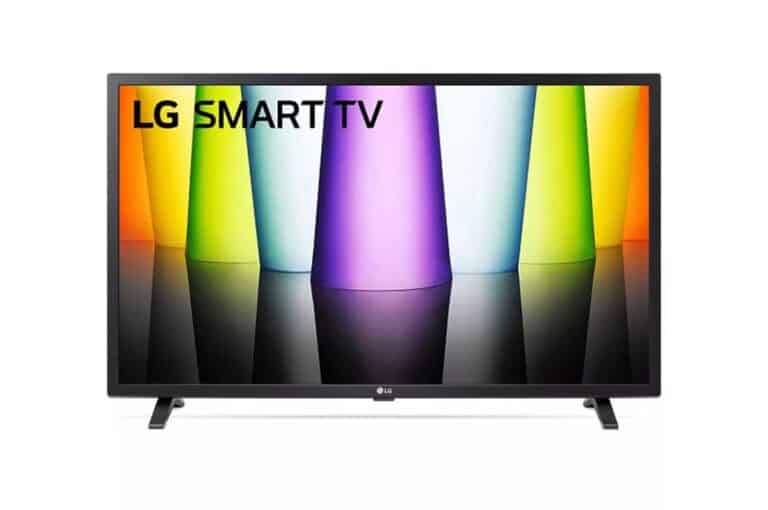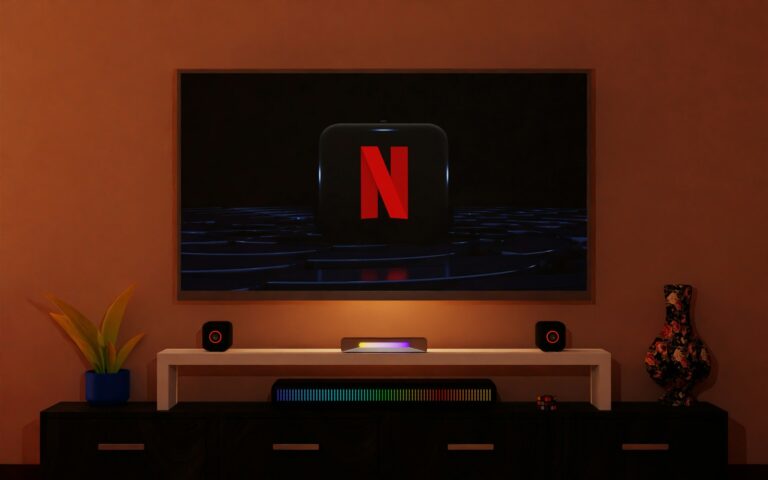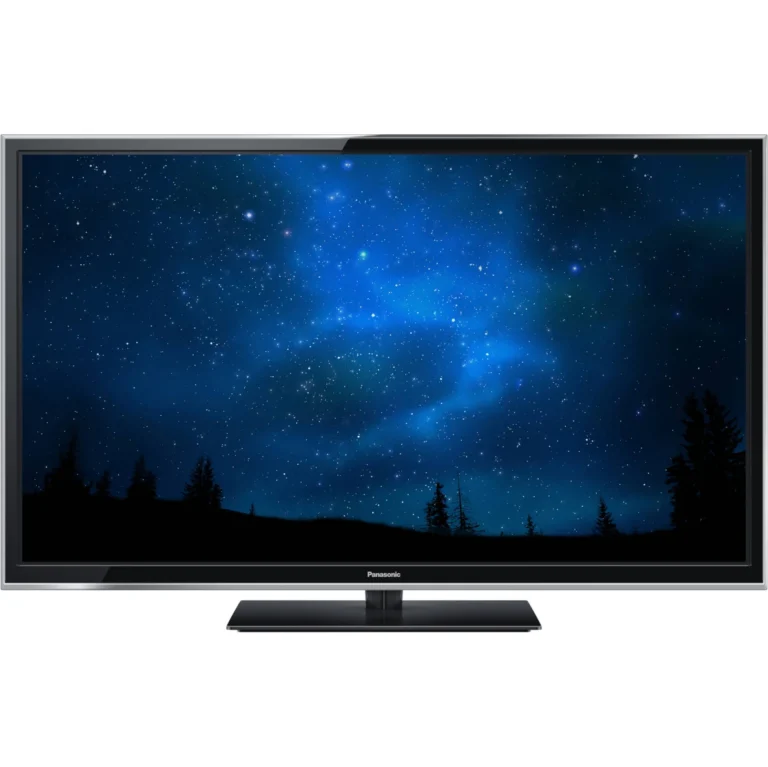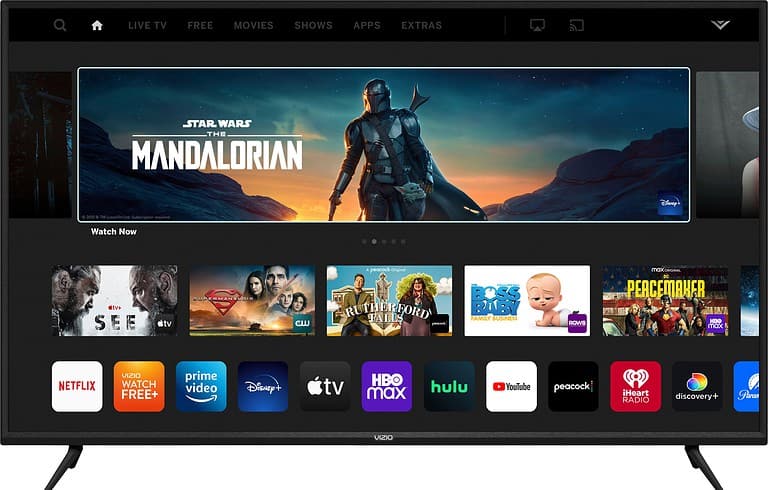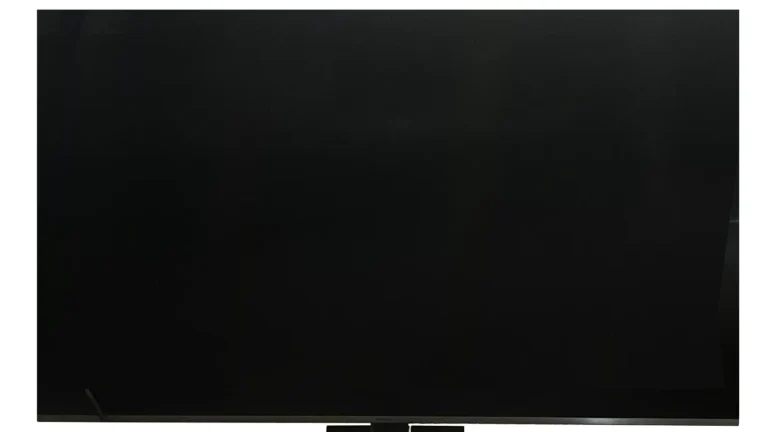
Want to transform your regular TV into an elegant piece of art? You’re not alone! Many homeowners are discovering that adding a simple frame to their television creates a sophisticated look that blends seamlessly with home decor. Creating a custom frame for your TV is an affordable DIY project that can give you the expensive “Frame TV” look without the premium price tag.
The process is simpler than you might think. With some basic materials like PVC molding, adhesive, and paint, you can build a custom frame that fits your exact television size and complements your existing decor style. This project typically takes just a few hours to complete and can dramatically change how your TV looks when not in use.
Beyond the physical frame, you can enhance the transformation by using smart features like Chromecast to display artwork when the TV isn’t being used for watching shows. Some DIYers even add anti-glare film stickers to reduce screen reflection and create a more authentic art display appearance.
1. Use “Art Mode” or Apps
If you have a smart TV, you may already have built-in features or apps that can display artwork or photos when the TV is idle.
- Samsung Frame TVs have a dedicated Art Mode, but you can mimic this on most TVs.
- Apps like Artcast (or even YouTube playlists of artwork) can turn your blank screen into a rotating art gallery (source: Emma Courtney Home).
- Personal photos: Upload family pictures or digital art to your TV via USB, Chromecast, or AirPlay.
💡 Pro tip: Adjust brightness and enable a matte filter (if available) so the screen looks less like a glowing monitor and more like a canvas.
2. Add a Decorative Frame Around the TV
Physically framing your TV makes the biggest difference.
- DIY wood frame: Build a simple wooden box that slides over the edges of your TV, leaving the screen exposed (source: Better Homes & Gardens).
- Magnetic or snap-on frames: Some companies sell ready-made TV frames designed to fit standard models.
- Paint or stain the frame to match your décor — gold for a gallery look, black for modern minimalism, or rustic wood for farmhouse charm.
3. Adjust Mounting & Placement
Placement makes your TV blend in like artwork.
- Wall mount it flush: Use a low-profile or no-gap wall mount so the TV sits flat against the wall (source: Asurion).
- Hide cables with cord covers or run them inside the wall.
- Gallery wall effect: Surround your TV with framed photos or art so it blends right in.
4. Style the Display Content
Once your TV looks framed, what’s on the screen matters.
- Classic art: Museums often offer free high-resolution downloads of famous paintings.
- Minimalist designs: Neutral textures, line art, or calming photography work well.
- Seasonal displays: Rotate artwork with the seasons or holidays for a fresh look.
5. Bonus Touches
- Add smart lighting (like Philips Hue strips) behind the TV to create a soft glow, mimicking a backlit frame.
- Use matte screen protectors to reduce glare and make the display look more like paper or canvas.
✅ Summary:
To make any TV look like a picture frame, combine digital art apps or photo slideshows with a decorative frame, flush wall mounting, and thoughtful styling. With the right setup, your TV can seamlessly double as a piece of art when not in use.
Key Takeaways
- A DIY TV frame can be created using PVC molding, adhesive, and paint for a fraction of the cost of commercial frame TVs.
- Adding smart devices allows your framed TV to display artwork when not in use, completing the picture frame effect.
- The project requires minimal tools and typically takes only a few hours to transform your standard television into a decorative focal point.
Understanding Picture Frame TVs
Picture frame TVs blend technology with art, creating displays that look like framed artwork when not in use. These innovative devices have transformed how televisions fit into home decor.
Evolution of Frame TVs
The concept of disguising televisions as art began before Samsung’s popular Frame TV entered the market. Early versions used custom cabinetry or actual picture frames mounted around standard TVs.
As technology advanced, manufacturers started developing specialized displays designed to mimic artwork. Samsung introduced The Frame TV in 2017, revolutionizing the category with a dedicated product rather than just an aftermarket solution.
The Frame TV evolved through several generations, each improving picture quality, thinness, and art display capabilities. These improvements made the transition between TV and art mode more convincing.
Today, various methods exist to achieve the picture frame effect, including using streaming devices to display slideshows or casting images from other devices.
Features of Samsung Frame TV
Samsung’s Frame TV offers several distinctive features that separate it from standard televisions. The device includes a matte display that reduces glare and reflections, making artwork look more authentic.
The Frame TV comes with customizable bezels that resemble picture frames. These bezels are magnetic and can be swapped to match different interior designs or artwork styles.
A motion sensor activates the display when someone enters the room and turns it off when no one is present, conserving energy. This feature makes the art display seem more like a static picture frame.
The TV connects to the Samsung Art Store, providing access to over 1,400 curated works from renowned museums and galleries worldwide. Users can purchase individual pieces or subscribe for unlimited access.
One Invisible Connection combines power and data cables into a single thin, transparent cord that reduces visual clutter.
The Aesthetics of Art Mode
Art Mode transforms The Frame TV into a convincing artwork display when not being used for watching content. The display automatically adjusts brightness based on ambient lighting conditions, making artwork look natural in any setting.
Users can upload personal photos to display in Art Mode, creating custom galleries of family portraits or vacation memories. The matte screen finish helps these images appear more like printed photographs.
The Frame TV offers various layout options for displaying art, including museum-style mattes that add white space around images. These presentation options enhance the gallery-like appearance.
For those without a Samsung Frame TV, similar aesthetics can be achieved by creating DIY decorative frames for existing televisions using PVC molding and adhesives. This approach offers customization at a fraction of the cost.
Preparing Your TV for the Frame Transformation
Before creating your DIY frame TV, proper preparation ensures your television will look its best and function correctly once the transformation is complete. The right hardware choices and proper mounting considerations lay the foundation for a successful project.
Selecting the Right TV Model
Not all televisions are equally suited for the frame TV look. Slim models with minimal bezels work best as they create a more seamless appearance when framed. LED and OLED TVs are ideal choices due to their thin profiles.
Look for TVs with a matte screen finish rather than glossy to reduce glare and better mimic artwork. While the actual Samsung Frame TV comes with a special anti-glare coating, regular TVs can still achieve a similar effect.
Consider these features when selecting your TV:
- Thickness: Thinner is better for a flush wall mount
- Bezel size: Minimal or no bezel provides the cleanest look
- Screen finish: Matte reduces glare
- Cable management options: Helps achieve a cleaner look
Smart TVs with built-in art modes or compatibility with apps that display artwork are particularly advantageous for this project.
Assessing Wall-Mount Compatibility
The right wall mount is crucial for achieving the picture frame effect. Look for low-profile or “flush” mounts that position the TV as close to the wall as possible, typically less than 1 inch away.
Check your TV’s VESA pattern (the mounting hole configuration on the back) and ensure your chosen mount matches. Most modern flat-screen TVs follow standard VESA patterns.
Consider cable management solutions like recessed wall outlets or cable raceways. These help maintain the clean, frame-like appearance by hiding unsightly cords.
Many DIY Frame TV tutorials recommend testing your mount before finalizing the installation. This ensures proper fit and alignment before adding the decorative frame elements.
For power solutions, explore options like:
- In-wall power kits (where code-compliant)
- Cord covers that can be painted to match your wall
- Strategic furniture placement to hide cables
DIY Frame Creation for Your TV
Creating a custom frame transforms an ordinary TV into an elegant focal point in any room. This project uses simple materials and techniques to achieve results similar to expensive designer options at a fraction of the cost.
Materials Needed for a DIY Frame
To build a decorative TV frame, you’ll need:
- Decorative molding (PVC or wooden depending on preference)
- Corner brackets for secure assembly
- Power Grab adhesive or wood glue
- Measuring tape and pencil
- Miter saw or miter box with hand saw
- Sandpaper (150-220 grit)
- Paint or stain in your chosen finish
- Black spray paint (for the inner frame edge)
- Brad nails and nail gun (optional)
Select molding that complements your home décor style. PVC molding offers durability and doesn’t warp with heat. Wood provides a classic look but may need special treatment for heat resistance.
Step-by-Step Frame Crafting Instructions
Measure your TV precisely. Take measurements of the visible screen area, not the entire TV.
Cut molding pieces at 45-degree angles using your miter saw. Add 1/4 inch to measurements to ensure the frame doesn’t cover any screen area.
Sand all edges until smooth and remove any dust before finishing.
Paint or stain your frame pieces. For a Frame TV look, paint the inner edge black to blend with the TV bezel.
Dry fit the pieces before final assembly to ensure proper alignment.
Assemble the frame by applying adhesive to the mitered corners and securing with corner brackets if needed.
Let the frame dry completely according to the adhesive manufacturer’s instructions before handling or mounting.
Attaching the Frame Securely
The mounting method depends on your TV setup and frame weight. For lightweight frames, adhesive mounting works well. Simply apply strong double-sided tape or velcro strips to the back of the frame and press firmly onto the TV bezel.
For heavier wooden frames, create a bracket system. Build the frame slightly larger than the TV with a lip that sits on top of the television for stability, as some DIYers recommend on Reddit.
Another method involves using L-brackets attached to the frame and wall behind the TV. This works especially well for wall-mounted setups.
Ensure the frame doesn’t block ventilation, ports, or the remote sensor. Test all TV functions with the frame in place before finalizing the installation.
Enhancing Your Frame TV with Smart Features
Modern TVs offer various smart features that can transform them into elegant digital frames when not in use for regular viewing. These features make your TV blend seamlessly with your home decor.
Utilizing Screensaver Options
Most modern smart TVs come with built-in screensaver options that can display artwork or photos. The Samsung Frame TV, for example, has a dedicated Art Mode that transforms the screen into a beautiful canvas when not in use.
To set up your screensaver:
- Navigate to your TV settings menu
- Look for “Screensaver” or “Ambient Mode” options
- Select from pre-loaded artwork or upload your own images
- Adjust brightness settings to match your room’s lighting
For non-Samsung TVs, users can access similar features through streaming devices like Roku, Apple TV, or Chromecast. These devices allow you to display slideshows from your photo library when the TV is idle.
Incorporating Motion Sensors for Interaction
Motion sensors add a touch of magic to your frame TV setup by activating only when someone is present in the room. This feature conserves energy and creates an interactive experience.
Several options exist for adding motion sensing capability:
- Built-in sensors – Some premium TVs come with integrated motion detection
- Smart home sensors – Compatible with systems like SmartThings or HomeKit
- Third-party motion detectors – Can be connected to smart plugs or hubs
Motion sensors can be programmed to turn the display on when someone enters the room and off when the space is vacant. This creates the illusion that your TV is actually a frame displaying artwork that only appears when someone is there to appreciate it.
Activating Ambient Mode
Ambient Mode is a specialized display setting that adapts to your surroundings. Unlike standard screensavers, Ambient Mode can match the wall behind your TV or display useful information alongside artwork.
To make the most of Ambient Mode:
- Set your TV to detect the wall pattern or color behind it
- Customize information widgets like weather, time, or news headlines
- Adjust transparency settings for a more realistic frame effect
- Consider resolution requirements for optimal image quality
The best Ambient Mode displays use low-power settings to maintain the artwork display without excessive energy consumption. For optimal results, photos should be properly sized at 3840×2160 pixels to match 4K TV resolution.
Customization Options for Frame TVs
Creating a custom frame for your TV transforms it from an electronic device into an artistic centerpiece. These options allow you to tailor the look to your specific home design aesthetic.
Choosing Decorative Trim Designs
When selecting trim for your DIY TV frame, consider both style and material. Wood trim offers a classic appearance and comes in various profiles like beveled, rounded, or flat. Each creates a different visual effect when framing your television.
Metal trim provides a modern, sleek option that works well in contemporary spaces. Building your own frame is both easy and inexpensive compared to purchasing pre-made options.
Consider these popular trim styles:
- Colonial: Traditional with elegant curves
- Craftsman: Simple, clean lines with minimal detailing
- Ornate: Decorative scrollwork for formal spaces
- Minimalist: Thin profiles for subtle framing
The width of trim significantly impacts the final look. Wider trim creates a more substantial frame, while narrower options offer a delicate appearance.
Mixing and Matching Styles to Match Decor
Your TV frame should complement your existing decor rather than compete with it. In traditional rooms, ornate wooden frames with rich stains enhance the classic ambience. Modern spaces benefit from clean-lined frames in neutral colors or metallic finishes.
For eclectic interiors, consider combining different materials. A wooden frame with metal accents creates visual interest while bridging different design elements in your space.
Color selection is crucial for seamless integration. Match your frame to existing woodwork for cohesion, or create contrast with a complementary hue from your color scheme. DIY tutorials show how to create less expensive versions of designer frames.
Don’t forget about texture. Distressed finishes work well in farmhouse styles, while smooth, glossy surfaces complement contemporary decor. Some homeowners even add anti-glare film to reduce reflections and enhance the artwork appearance.
Installation and Setup
Transforming your regular TV into a beautiful picture frame requires proper installation and setup. The right mounting technique, correct connections, and optimal display settings will ensure your TV blends seamlessly with your home decor.
Mounting Your Picture Frame TV
Proper mounting is crucial for achieving the authentic picture frame TV look. Start by selecting an appropriate location – ideally at eye level and in an area with minimal glare. Measure the TV dimensions carefully before mounting to ensure the frame will fit properly.
For a flush wall mount, use a low-profile mounting bracket. These brackets position the TV close to the wall, mimicking how real artwork would hang. Many DIY frame TV tutorials recommend leaving about 1/8 inch clearance between the TV and frame for proper ventilation.
When installing the mount, use a stud finder to locate wall studs for secure attachment. For homes with Samsung Frame TVs, the specialized “No Gap” wall mount provides an almost seamless look.
Connecting to Streaming Services and Devices
Once mounted, setting up the proper connections ensures optimal functionality. Hide cables using cord covers or in-wall cable management systems to maintain the clean artwork appearance.
For dedicated art display, connect the TV to WiFi to access art subscription services. Samsung Frame TV owners can subscribe to the Art Store for curated collections, while other TVs might use apps like Spotify Canvas or specialized art display applications.
Consider HDMI switches that allow multiple devices to connect without frequent cable swapping. Smart home integration with voice assistants enables hands-free control – turning the TV into “art mode” without remotes.
Wireless connections are preferable to maintain the clean aesthetic. Bluetooth capabilities allow audio to play through external speakers without visible wires.
Optimizing Picture Quality for Artwork Display
Adjusting display settings transforms the viewing experience from standard TV to convincing artwork. Access the TV’s picture settings and reduce brightness to around 40-50% for a more natural, non-backlit appearance.
Enable any built-in ambient light sensors so the screen adapts to room lighting. For standard TVs without frame TV features, manually adjust the backlight to its lowest comfortable setting.
Color temperature settings should be changed to “warm” to better mimic printed artwork. If available, turn off motion smoothing and unnecessary image processing that might make artwork look artificial.
Anti-glare screen protectors can reduce reflections that detract from the art display effect. Some higher-end models feature matte display options specifically designed to mimic canvas or paper textures.
Frequently Asked Questions
Transforming a regular TV into an elegant picture frame involves various techniques, materials, and technology options. These solutions range from DIY wooden frames to specialized TV models designed specifically for displaying art.
What techniques can I use to create a frame around my television on the wall?
Several approaches exist for framing a wall-mounted TV. The most popular method involves building a simple wooden frame that attaches around the television’s edges.
This can be accomplished by measuring the TV dimensions, cutting wooden pieces at 45-degree angles, and assembling them with wood glue and corner brackets. The frame can then be stained or painted to match the room’s decor.
Some homeowners opt for building their own frame using basic lumber materials, which can cost as little as $12 while achieving a high-end look similar to expensive commercial options.
Is there a commercial TV frame kit available for enhancing the aesthetic of my flat-screen TV?
Yes, commercial TV frame kits are widely available in various styles, materials, and price points. These ready-made solutions typically include pre-cut frame pieces that assemble around the television.
Many kits come with easy installation hardware and instructions. Frame materials range from wood and metal to plastic composites designed to look like more expensive materials.
Most commercial frames are adjustable to fit various TV sizes and can be installed without professional help. Prices typically range from $100 to $500 depending on size, material quality, and design complexity.
How can I convert my existing TV into a digital picture frame when not in use?
Converting a regular TV into a digital art display is possible through several technological approaches. One method is to use streaming devices to show slideshows when the TV isn’t being used for regular viewing.
Smart TV owners can install photo display apps or utilize built-in screensaver features. For Roku TVs, users can install the Photo View channel and create galleries through Google Photos.
Another option involves casting slideshows from smartphones or tablets directly to the television. USB drives loaded with artwork can also be connected to many modern TVs to display images when in standby mode.
Can you utilize crown molding to fashion a decorative frame for a wall-mounted television?
Crown molding offers an elegant option for creating a TV frame with architectural interest. This technique works particularly well in traditionally styled homes.
The process involves cutting crown molding pieces to fit the television dimensions and attaching them using construction adhesive or finishing nails. For best results, the corners should be mitered at 45-degree angles.
Crown molding frames can be painted to match existing trim in the room or finished in a contrasting color to make the television stand out as an intentional design element.
Are there specific models of TVs that come designed to also serve as an art piece?
Yes, several manufacturers now produce televisions specifically designed to display artwork when not in use. The Samsung Frame TV is the most well-known example, featuring an art mode that displays realistic-looking paintings or photographs.
These specialized TVs typically include customizable frame options, anti-glare screens, brightness sensors that adjust to room lighting, and extensive digital art libraries available for subscription.
While purpose-built frame TVs command premium prices, their specialized hardware and software create a more convincing art display than standard televisions. DIY enthusiasts sometimes create clones of these frame TVs using regular televisions and streaming devices.
What options do I have for customizing a wooden frame to mount around my TV?
Wooden frames offer nearly limitless customization possibilities. The wood can be selected based on grain pattern, color, and hardness—with options ranging from pine and oak to exotic hardwoods.
Frame profiles can vary from simple and modern to ornate and traditional. Building a decorative frame allows homeowners to match existing furniture or architectural elements in the room.
Finishing options include stains, paints, distressing techniques, and even decorative elements like carved details or metal accents. The frame width can be adjusted to personal preference, with wider frames creating more visual impact.

